Creating Inclusive Outdoor Environments for All
The Urgency and Promise of Autism-Friendly Recreational Spaces
As public awareness of neurodiversity grows, the importance of designing parks and recreational areas that serve the needs of autistic individuals becomes increasingly evident. Such spaces do not only benefit those with autism but enrich entire communities by fostering inclusion, social cohesion, and well-being. This article explores the best practices, principles, features, and frameworks essential for creating parks that are truly accessible and engaging for neurodivergent users.
Core Principles for Autism-Friendly Space Design
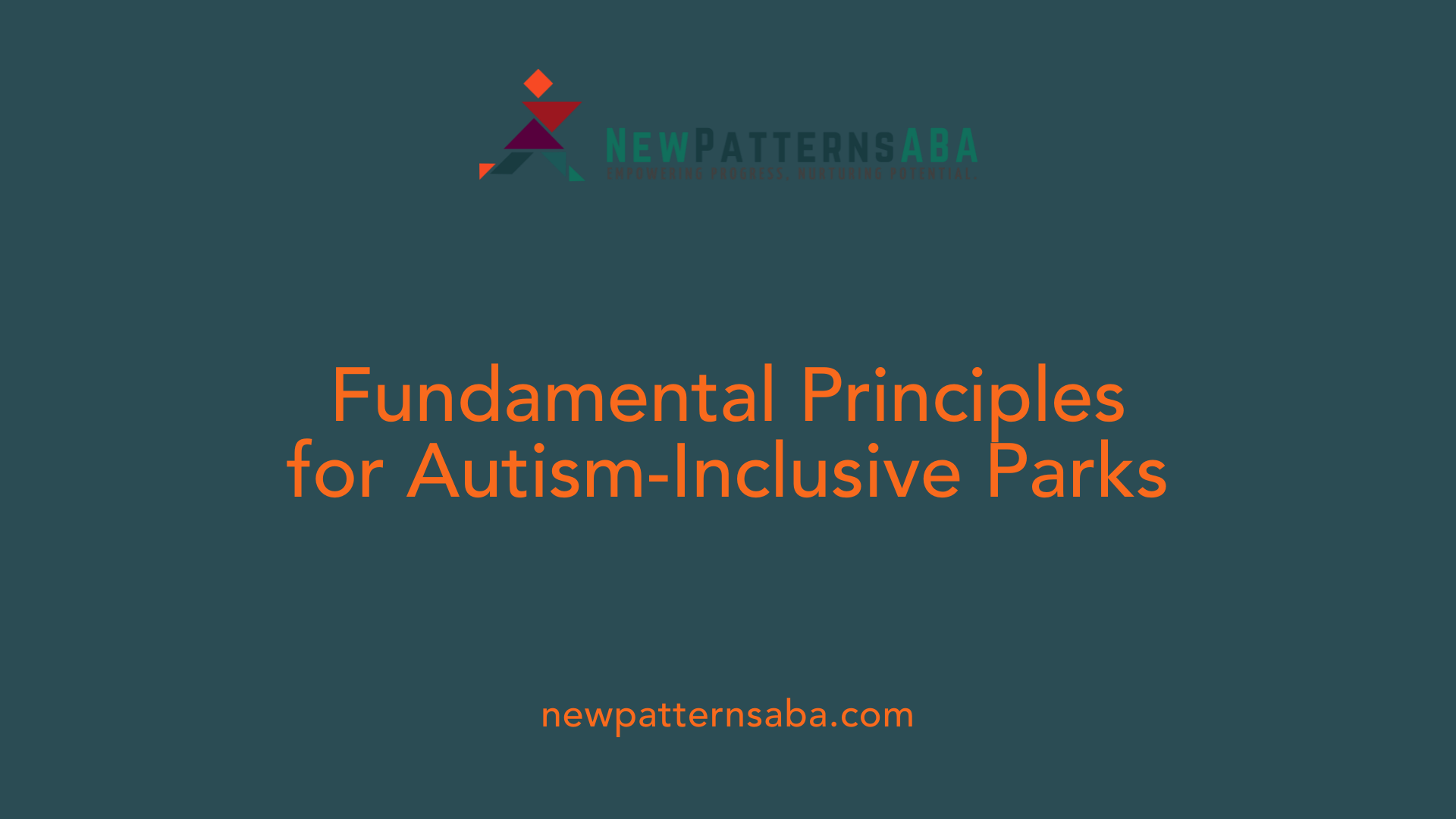
What are the key principles for designing autism-friendly parks and recreational spaces?
Designing parks and recreational areas that cater to individuals with autism involves a thoughtful combination of sensory considerations, spatial organization, and inclusive features. Central to this approach are sensory-sensitive elements such as calming zones, tactile activities, and controlled acoustics. These features help individuals with sensory processing differences manage overstimulation and encourage participation.
An essential aspect is creating predictable layouts with clear, logical spatial organization. This reduces confusion and anxiety, allowing users to navigate the space comfortably. Quiet zones and escape areas are vital, providing peaceful retreats where visitors can self-regulate or find a moment of calm.
Implementing universal design principles enhances accessibility and safety for all users. These include accessible pathways wide enough for wheelchairs, ramps, textured surfaces for navigation, and safety measures like fencing and non-slip flooring. Multi-sensory experiences can be incorporated through interactive play elements, natural materials, and visual textures to engage diverse senses.
Involving autistic individuals and their caregivers during the design process ensures the space truly meets their needs. This participatory approach helps identify features that can support social interaction, self-regulation, and enjoyment, making the environment welcoming and inclusive.
A comprehensive autism-friendly space balances safety, sensory needs, and usability. Overall, these principles aim to foster environments where everyone, regardless of sensory sensitivities or physical abilities, can explore, play, and connect safely and comfortably.
Sensory Environment Optimization
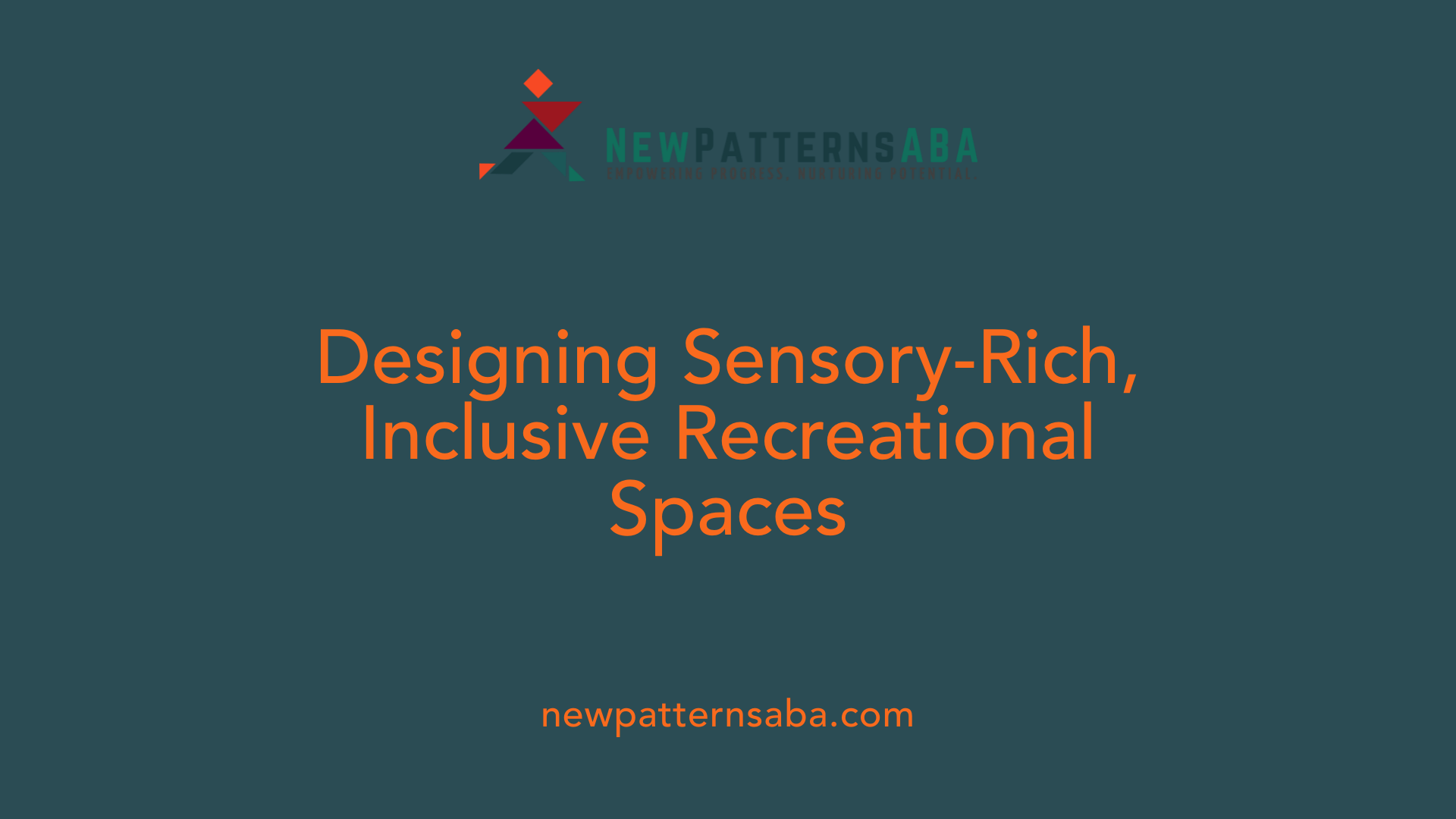
What features and elements should be included in inclusive recreational spaces for neurodivergent users?
Designing inclusive recreational spaces for neurodivergent individuals requires a thoughtful integration of sensory, social, and natural elements. These environments aim to promote engagement, comfort, and emotional regulation by offering diverse sensory experiences.
Key features encompass sensory play equipment, such as textured panels, sound-producing elements, and visual stimuli that excite or calm according to individual needs. Quiet zones and shaded retreat areas provide a haven for relaxation and sensory breaks, helping to reduce overstimulation and anxiety.
Natural elements like trees, water features, and varied terrain add biophilic value, encouraging sensory exploration through sight, sound, and touch. These features not only enhance the aesthetic appeal but also serve as calming influences, fostering emotional well-being.
Accessibility is central, with well-designed pathways and adaptable structures ensuring that users with mobility challenges can navigate and enjoy the space fully. Regularly consulting with community members, including neurodivergent children and their families, as well as experts like occupational and physical therapists, informs the creation of environments that meet diverse needs.
Incorporating universal design principles allows these spaces to be flexible and welcoming for all. For example, visual signage with symbols and tactile cues helps facilitate understanding and navigation for children with different communication styles.
The ultimate goal is to balance sensory stimulation with predictability and natural elements, fostering environments where children can develop social skills, express themselves creatively, and build emotional resilience. Such spaces support the well-being and growth of neurodivergent children, encouraging confidence and inclusion.
Features of Inclusive Recreational Environments
| Feature | Description | Purpose |
|---|---|---|
| Sensory Play Equipment | Textured, auditory, and visual stimuli | Stimulate and calm sensory processing |
| Quiet Zones | Separate, shaded, and soundproofed areas | Provide safe spaces for sensory regulation |
| Natural Elements | Trees, water, terrain variations | Support biophilic engagement and calming effects |
| Accessible Pathways | Wide, even, and clearly marked routes | Ensure mobility for all users |
| Adaptive Structures | Ramps, adjustable-height features | Include users of various abilities |
| Signage and Cues | Symbols, tactile signs, visual guides | Facilitate communication and orientation |
| Community Input | Collaboration with families and experts | Define meaningful, inclusive features |
Search and Further Information
Research on sensory-friendly park designs and natural environment integration highlights the significance of blending biophilic features with accessible and sensory elements. Using natural materials, water features, and native landscaping creates engaging and soothing spaces that promote inclusion.
Incorporating sensory-friendly features not only benefits neurodivergent users but also enhances overall accessibility and enjoyment for all community members. As awareness increases, more parks and recreational areas are adopting these inclusive design principles to foster diversity and well-being across populations.
Natural Environments and Sensory Regulation
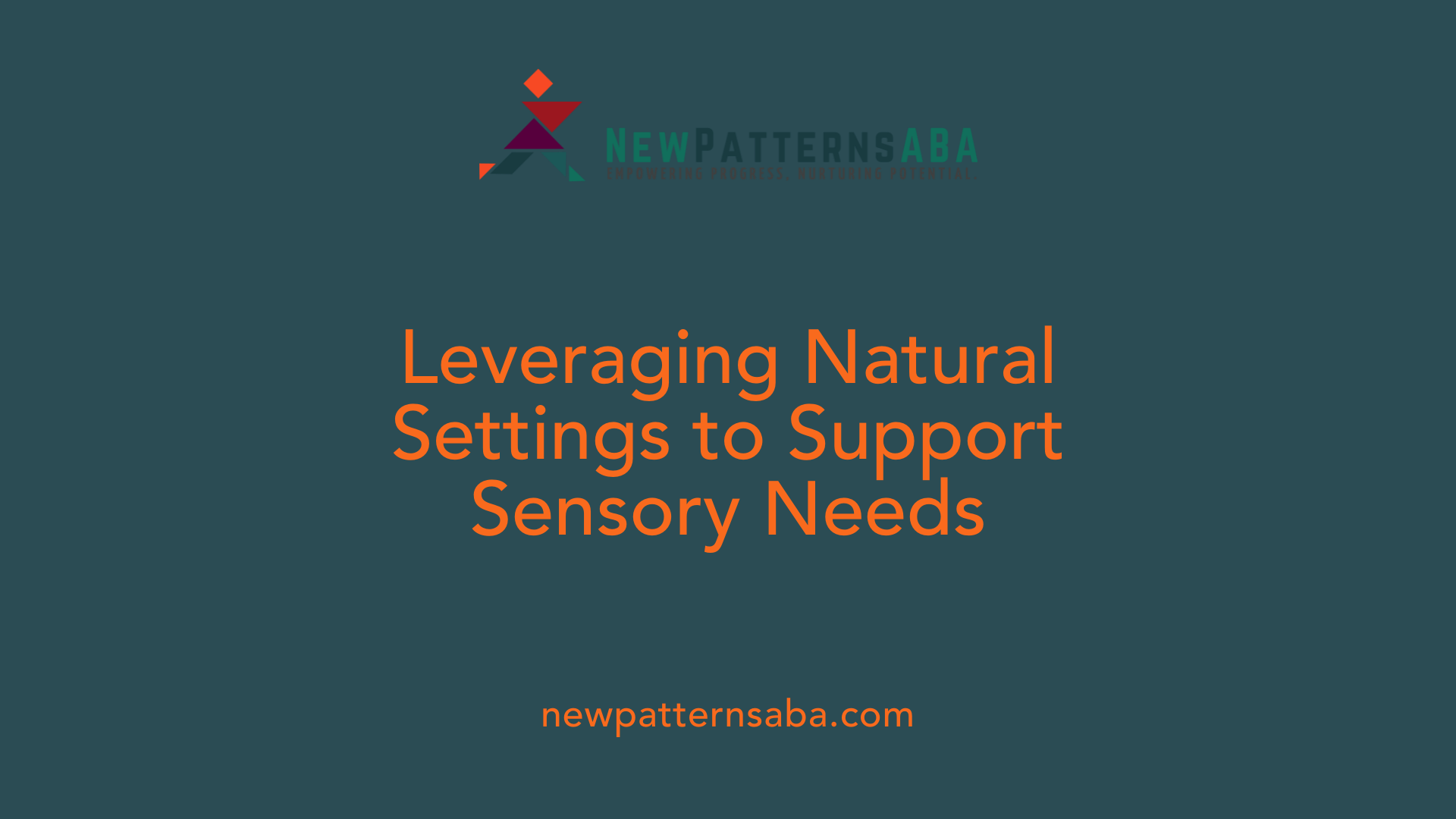
How can existing parks be modified to better support individuals with autism?
Modifying parks to be more autism-friendly involves integrating natural materials and features that promote calming sensations. Using wood, stone, and plant-based elements can create a soothing atmosphere that appeals to sensory sensitivities.
Natural terrains, such as gentle slopes and soft ground coverings, help reduce the risk of injury and provide varied tactile experiences. Water features, like small streams, splash pads, or quiet ponds, serve as engaging sensory tools. Children and visitors can enjoy watching, touching, and listening to water, which often has a calming effect.
Creating designated escape and sensory zones within parks offers safe spaces for children and visitors to relax or regroup if they feel overwhelmed. These zones should be enclosed with natural barriers like shrubbery or fencing, and equipped with soft textures, comfortable seating, and calming natural visuals.
Existing parks can be upgraded by including sensory-friendly zones, such as quiet tents or shaded seating areas surrounded by natural elements. Implementing wide, smooth pathways ensures accessibility for wheelchairs or mobility aids, while textured pavement marks and gentle gradients make navigation easier for all visitors.
Other modifications include installing clear signage with symbols and visual guides, detailing accessible routes and sensory-friendly features. It’s essential to offer sensory guides that explain the options for sensory input, such as areas for tactile play or sound management.
Staff training is equally important; park staff and volunteers should be educated about autism awareness, sensory sensitivities, and effective communication techniques. This understanding helps provide respectful and supportive assistance.
Community involvement is vital. Engaging disability advocates and consulting with families of autistic children during park redesigns ensures that modifications truly meet the needs of users. Collecting feedback after implementation helps continuous improvement.
By integrating these elements, parks transform into inclusive outdoor spaces that support sensory regulation, foster social connection, and promote enjoyment for children and adults with diverse sensory processing needs.
| Modification Aspect | Description | Example Features |
|---|---|---|
| Natural Materials | Use of calming, tactile elements | Wood, stone, natural plants |
| Terrain & Water | Sensory exploration & calming | Gentle slopes, streams, splash pads |
| Escape & Sensory Zones | Safe retreat areas | Enclosed quiet zones with natural barriers |
| Accessibility | Inclusive pathways & surfaces | Wide, textured paths, ramps |
| Signage & Guides | Clear instructions & sensory info | Visual symbols, sensory trail maps |
| Community & Staff Engagement | Inclusive programming | Staff training, community input |
In summary, thoughtful modifications that emphasize natural materials, terrains, water features, and dedicated sensory zones make parks more supportive environments for individuals with autism. These changes not only help in sensory regulation but also foster a sense of belonging and community for all visitors.
Design Strategies for New Autism-Friendly Parks
What practical steps can be taken to develop new autism-friendly parks or enhance existing ones?
Creating parks that effectively serve children with autism and include the entire community requires a thoughtful, multi-faceted approach. First, engaging with the community—especially autistic individuals and their families—is essential. This involves collecting ongoing feedback to understand their specific needs, preferences, and challenges in current outdoor environments.
Incorporating sensory-friendly features is a cornerstone of autism-friendly park design. These features include dimmable lighting options to accommodate sensory sensitivities, quiet zones for calming breaks, soft textures in playground surfaces, and sensory play equipment that engages multiple senses without overwhelming users. Clear and visual signage helps create predictability, reduces anxiety, and supports independent navigation.
Design frameworks such as ASPECTSS are instrumental in guiding inclusive space development. These frameworks emphasize input from autistic individuals and professionals during the planning phase, ensuring the environment addresses issues like acoustics, spatial sequencing, and the provision of escape and sensory zones.
Safety is another critical aspect. Implementing secure fencing around play areas prevents elopement, while smooth, shock-absorbing surfacing reduces the risk of injuries and improves accessibility for children with motor differences. Thoughtful zoning—grouping similar activities but also emphasizing natural elements—can foster both engagement and tranquility.
To maximize inclusivity, parks should offer accommodations such as designated sensory-friendly hours with reduced noise and lighting, quiet retreat spaces, availability of noise-canceling headphones, and flexible activity schedules. These measures allow children with diverse sensory processing needs to participate comfortably.
Public education and outreach are vital to promote awareness and understanding. Utilizing signage that explains sensory features, hosting community events, and offering informational resources help create an inclusive atmosphere.
Finally, continuous evaluation based on community feedback ensures that the park evolves over time, maintaining relevance and accessibility. Monitoring usage patterns and gathering input can inform incremental improvements, ensuring the environment remains supportive and engaging for all users.
To summarize, developing autism-friendly parks involves a collaborative process that combines community input, evidence-based design principles, and safety-conscious features. Such environments not only benefit children with autism but also promote inclusive recreation for everyone, fostering stronger community bonds and healthier outdoor experiences.
Frameworks and Evidence-Based Design Approaches
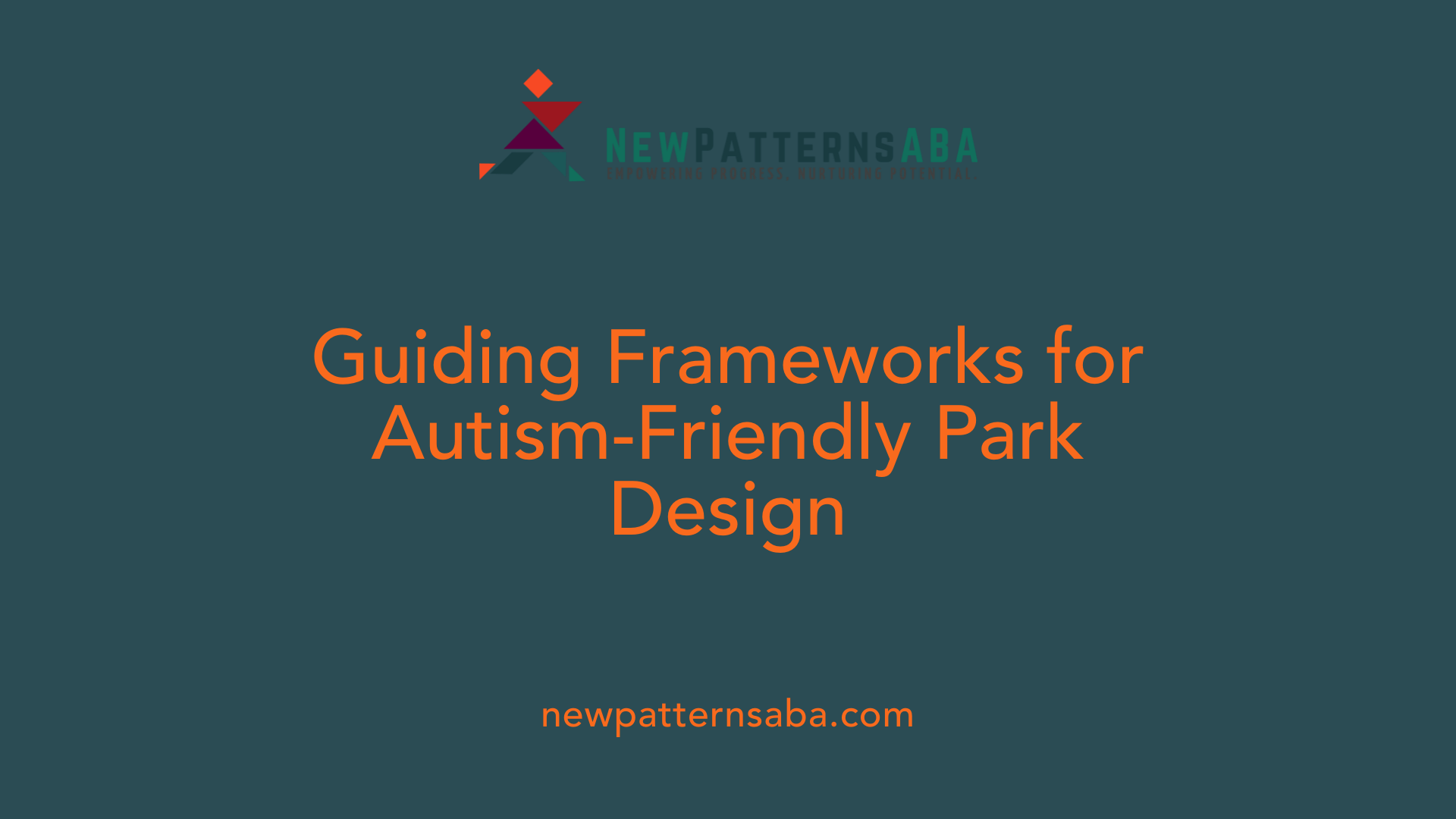
What frameworks or evidence-based approaches guide the creation of inclusive parks for individuals with autism?
Designing parks and play spaces that truly meet the needs of individuals with autism involves following proven frameworks and research-informed approaches. One of the most influential is the 7 Principles of Inclusive Playground Design. These principles emphasize fairness, accessibility, safety, and comfort, ensuring that every child, regardless of ability, can participate and enjoy the environment.
The ASPECTSS framework (which stands for Acoustic, Spatial, and Environmental considerations) specifically highlights sensory-friendly features that enhance comfort for autistic visitors. It stresses the importance of controlling acoustics to minimize overwhelming sounds, organizing spatial layouts for ease of navigation, and incorporating escape and sensory zones for moments of respite. Thoughtful attention to acoustics, natural materials, and clear circulation pathways helps reduce sensory overload and promote well-being.
Universal Design Principles serve as a foundational approach. They advocate for environments usable by the widest range of people, including those with sensory, physical, or cognitive challenges. Key features include obstacle-free entrances, ramps, sensory-friendly equipment, shaded and quiet spaces, and visual aids that facilitate understanding for all users.
Moreover, participatory planning has gained prominence. Engaging autistic individuals, families, and disability organizations during the design process ensures that parks reflect the actual needs and preferences of end users. This collaborative approach results in environments that support diverse social, emotional, and sensory requirements.
Research evidence reinforces these strategies. Studies show that sensory-friendly areas with solitary play zones, clear signage, natural settings, and trained staff contribute to increased participation and reduced anxiety. Sensory supportive features, such as textured surfaces, visual and auditory stimuli, and calming zones, are foundational.
Standards like the CSA Z614 provide baseline accessibility guidelines, but recent evidence suggests that exceeding these minimums—by integrating sensory considerations and flexible design options—better supports inclusion. For example, incorporating quiet rooms, shaded areas, and sensory-integrated play structures has been shown to enhance comfort and engagement.
In summary, designing inclusive parks guided by robust frameworks like ASPECTSS and inclusive playground principles—coupled with participatory planning and ongoing research—ensures environments that are welcoming, safe, and supportive for all users, especially those with autism.
Community Engagement and Policy Support

Why Is Community Input Vital for Autism-Friendly Parks?
Creating parks that truly serve the needs of autistic children and their families requires active involvement from the community. Listening to direct feedback from autistic individuals, families, and advocacy groups helps designers and policymakers understand specific sensory sensitivities, preferences, and safety concerns.
Ongoing engagement through surveys, workshops, and participatory planning ensures that environmental features remain responsive and relevant over time. For instance, community insights can highlight the importance of quiet zones, natural play elements, and accessible equipment.
How Can Staff and Park Personnel Be Prepared?
Training is essential to foster understanding and effective support. Staff and park personnel should undergo autism awareness training that covers sensory sensitivities, behavioral cues, and ways to assist visitors respectfully.
Equipping staff with knowledge about the features of sensory-friendly environments allows them to guide visitors positively, answer questions, and manage situations calming and supportively. Regular training updates help maintain high standards of inclusivity and safety.
What Role Do Policies and Funding Play?
Supportive policies and adequate funding are crucial in building and maintaining inclusive spaces. Governments and local authorities can allocate budgets specifically for sensory-friendly features and accessible infrastructure.
Policy frameworks like the ASPECTSS model guide the design of autism-friendly environments, emphasizing input from experts and affected communities. Moreover, policies can mandate baseline standards for accessibility, funding for ongoing programs, and inclusive event hours.
Leveraging grants, public funding, and partnerships with organizations can accelerate the development of new parks or upgrade existing ones. These resources enable wider implementation of sensory-friendly features, ensuring long-term sustainability.
Practical Steps for Developing or Enhancing Parks
| Step | Action | Details |
|---|---|---|
| 1 | Community Consultation | Organize focus groups, surveys, and workshops with autistic individuals and families to gather detailed preferences and needs. |
| 2 | Sensory-friendly Design Features | Incorporate dimmable lighting, quiet zones, soft textures, sensory play equipment, and natural elements based on community feedback. |
| 3 | Accessibility and Safety | Install fencing, smooth surfacing, ramps, and sensory-safe zones that cater to diverse abilities, reducing risks like elopement or injury. |
| 4 | Inclusive Play Areas | Equip parks with adaptive swings, sensory rooms, and natural play components to promote engagement and skill development. |
| 5 | Accommodations and Hours | Offer sensory-friendly hours, quiet retreats, noise-canceling aids, and flexible programming to meet diverse sensory needs. |
| 6 | Staff Training and Community Outreach | Ensure staff are trained in autism awareness; promote inclusivity through outreach and information dissemination. |
| 7 | Policy and Funding Support | Seek grants and policy backing to sustain and expand inclusive features and programs. |
Benefits of Well-Designed Inclusive Parks
Accessible parks foster greater participation among children with sensory sensitivities, reducing stress and enhancing social interaction.
They also promote an inclusive society by encouraging understanding and acceptance within the broader community.
Financially, investments in inclusive design can lead to increased usage, community engagement, and potential funding opportunities.
Involving Experts for Better Design
Engaging occupational therapists, physical therapists, and speech-language pathologists during the planning phase can help ensure that facilities meet the nuanced needs of autistic children.
Expert input guides the selection of sensory elements, layout, and safety features, creating environments that truly support development and enjoyment.
| Aspect | Focus Area | Examples |
|---|---|---|
| Sensory Environment | Lighting, sound, textures | Dimmable lights, soundproof zones, textured pathways |
| Play Equipment | Accessibility, sensory input | Wheelchair ramps, textured panels, sound-producing elements |
| Safety | Fencing, clear visibility | Fenced boundaries, open sightlines for supervision |
| Natural Elements | Calm and sensory engagement | Gardens, water features, natural materials |
| Community Engagement | Feedback and involvement | Regular forums, community art projects |
In conclusion, developing inclusive parks and enhancing existing ones demands a comprehensive approach rooted in community engagement, expert guidance, and strong policy support. These efforts ensure that parks are welcoming, safe, and enriching spaces for all children, particularly those with sensory sensitivities.
Impact on Community Well-Being and Social Inclusion
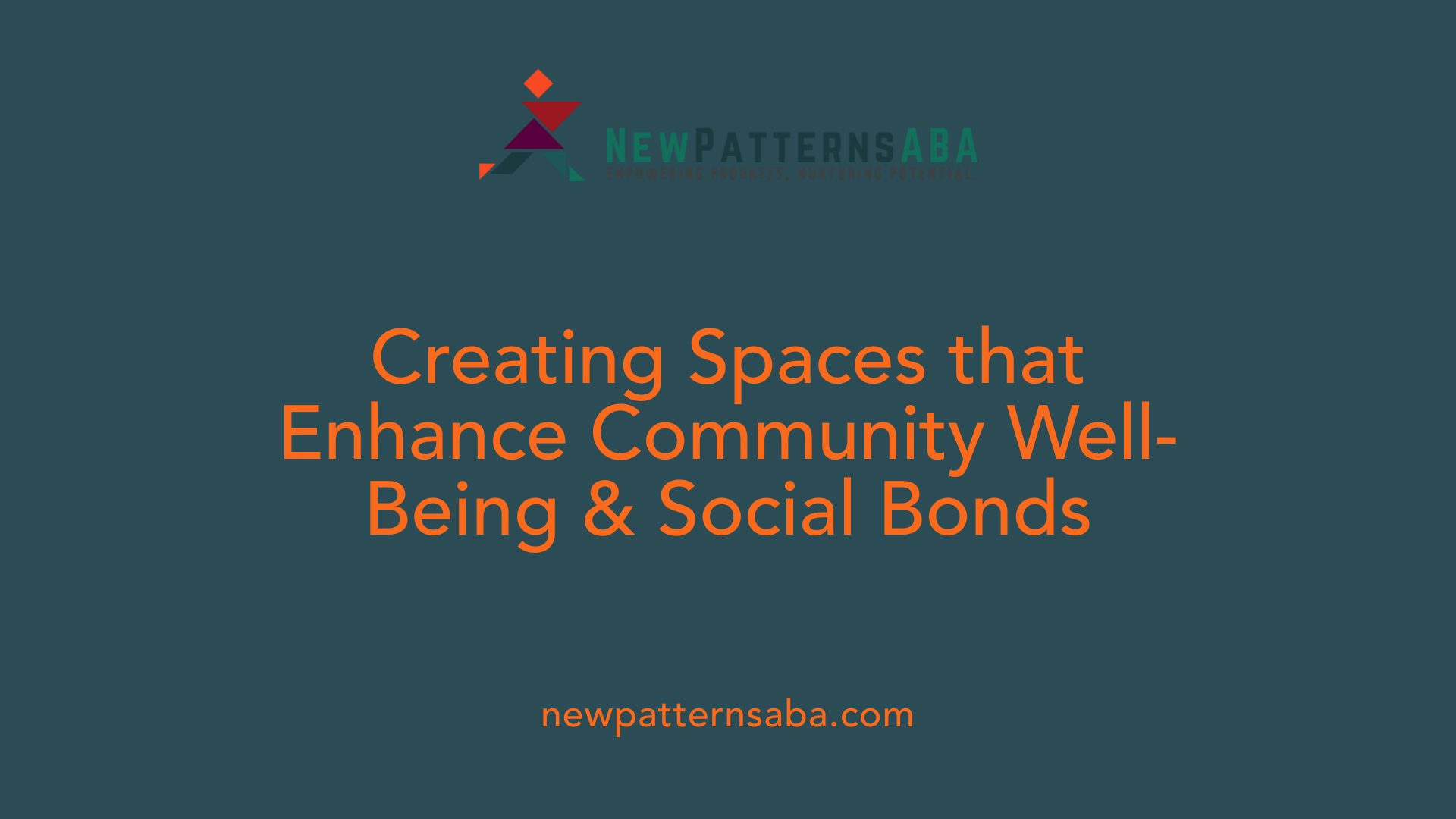
What are the benefits of creating autism-friendly recreational spaces for children and communities?
Developing autism-friendly recreational spots brings a wave of advantages that ripple through both individual lives and the wider community.
First, these inclusive spaces significantly improve social participation for children with autism. They provide accessible environments equipped with sensory-friendly features like calming zones, soft textures, and adjustable lighting, helping autistic children develop social skills and form friendships with peers.
These environments also boost emotional health by helping children manage stress and reduce anxiety. Quiet rooms, noise-canceling headphones, and predictable routines supported by visual schedules create a safe and comforting setting.
Another benefit is the promotion of independence. Adaptive activities and sensory interventions encourage children to explore and engage on their own or with minimal supervision, fostering self-confidence and motivation.
Community-wide, such spaces cultivate a culture of understanding and acceptance of neurodiversity. When neighborhoods include accessible recreational zones, residents gain a better appreciation of different needs, which promotes tolerance and empathy.
Safety is also enhanced with features like secure fencing, non-slip surfaces, and clear signage, making parks welcoming for all children regardless of ability.
From a broader perspective, inclusive parks and playgrounds contribute to physical well-being by encouraging active play and movement.
Finally, these efforts promote societal cohesion. They offer opportunities for families to connect, cooperate, and participate in shared activities, strengthening social bonds.
| Benefits for Children | Community Advantages | Supporting Features |
|---|---|---|
| Better social skills | Greater social cohesion | Sensory zones & calming areas |
| Reduced anxiety & stress | Inclusive acceptance | Adaptive equipment & signage |
| Increased independence | Community acceptance | Safe, accessible design |
| Enhanced self-confidence | Promoting diversity | Clear navigational aids |
| Improved physical health | Strengthened social bonds | Protective surfacing and fencing |
Implementing such inclusive environments exemplifies a commitment to diversity and equity, ultimately enriching community fabric and fostering a more compassionate society.
Practical Guidance for Stakeholders and Designers
What practical steps can be taken to develop new autism-friendly parks or enhance existing ones?
Creating parks that are accessible and welcoming for individuals with autism involves a thoughtful, multi-faceted approach. First, engaging with the community, especially autistic individuals and their families, is crucial. Conducting surveys, focus groups, and consultations helps gather valuable insights into specific needs and preferences.
Incorporating sensory-friendly features is fundamental. These include dimmable lighting options, quiet zones, and soft textures that reduce sensory overload and promote calmness. Sensory play equipment such as textured surfaces, sound-producing elements, and visual textures widen sensory engagement while respecting individual sensitivities.
Designing inclusive play areas with adaptive equipment, such as wheelchair-accessible swings and ramps, ensures everyone can participate. Natural elements like trees, water features, and rocks can offer calming effects and sensory variety. Ensuring safety and usability through fencing, clear pathways, and smooth surfacing is also essential.
Accommodations like sensory-friendly hours, quiet retreats, noise-canceling aids, and flexible activity zones address diverse sensory and behavioral needs. These spaces allow children with autism to enjoy outdoor activities comfortably.
To guide design, frameworks like ASPECTSS should be employed, emphasizing input from autistic individuals and professionals such as therapists. This ensures the environment is tailored to support sensory needs and promote social engagement.
Community outreach and awareness campaigns can educate the public and staff about autism inclusivity. Training staff in autism awareness and supportive practices enhances the overall experience.
Ongoing evaluation and feedback are vital for maintaining relevance and effectiveness. Periodic assessments and community participation help refine features based on actual use and changing needs.
By adopting these steps—community engagement, sensory-friendly design, safety measures, educational outreach, and continuous adjustment—stakeholders can create or improve parks that truly serve everyone, fostering inclusion, wellbeing, and community cohesion.
Integrating Design Frameworks and Standards for Inclusion
What frameworks or evidence-based approaches guide the creation of inclusive parks for individuals with autism?
Designing parks and playgrounds that truly support children with autism and other sensory sensitivities requires a thoughtful approach rooted in established principles and frameworks. One foundational guide is the 7 Principles of Inclusive Playground Design, which emphasize fairness, safety, accessibility, and fostering social interactions. These principles are supported by ongoing research and aim to ensure environments are welcoming and usable for all children.
Universal design principles form the core of creating accessible and inclusive environments. They advocate for features like obstacle-free entrances, ramps, sensory-friendly components, and clear signage that helps children and their families navigate spaces confidently. Universal design promotes engagement by minimizing barriers and encouraging participation regardless of ability.
Crucially, participatory planning processes involve end users—children with disabilities, their families, and disability organizations—in the design process. This collaborative approach guarantees that environmental, social, and structural aspects reflect real needs and preferences. Listening to those who will use the space ensures its features are meaningful and effective.
Research highlights several important features for sensory-friendly parks, including dedicated solitary play areas, shaded zones, and calm or quiet spaces to reduce overstimulation. Incorporating sensory elements like textured surfaces, sound-producing devices, and visual textures enriches the environment, while trained staff and informational signage support safety and understanding.
Standards like CSA Z614 provide essential guidelines for accessibility and safety, but they often serve as a minimum baseline. Evidence shows that going beyond these basics—adding features like adaptive equipment, sensory zones, and flexible play options—is vital to truly support diverse needs, especially for children with sensory processing challenges.
Use of ASPECTSS and CSA Z614 standards
The ASPECTSS framework offers a comprehensive approach to designing autism-friendly environments. This model emphasizes aspects such as Acoustics, Spatial Sequencing, Escape and Sensory Zones, and Transportation, all critical to managing sensory input and promoting comfort. Applying ASPECTSS ensures that noise levels are controlled, spaces are logically organized, and there are dedicated areas for sensory breaks.
CSA Z614, the Canadian standard for child and youth recreational environments, provides guidelines on safety and accessibility. While important, integrating ASPECTSS and similar frameworks ensures spaces are not only safe but also tailored to sensory needs, reducing stress and maximizing enjoyment for children with autism.
Aligning with universal design principles
Implementing universal design involves creating environments that are inherently accessible and inclusive. Seven principles guide this process:
| Principle | Focus | Example Features |
|---|---|---|
| Equitable Use | Same means of use for all | Ramps, accessible pathways |
| Flexibility in Use | Accommodate preferences | Adjustable sensory zones |
| Simple and Intuitive Use | Easy to understand | Clear signage, visual cues |
| Perceptible Information | Communicate effectively | Visual and tactile signals |
| Tolerance for Error | Minimize hazards | Rounded edges, safety surfacing |
| Low Physical Effort | Minimize strain | Non-slip surfaces, lever handles |
| Size and Space | Adequate for approach | Spacious pathways, maneuvering zones |
These principles promote environments that are welcoming to children of all abilities, facilitating social interactions and active play.
Ensuring ongoing evaluation and improvement
Designing inclusive spaces is an iterative process. Regular assessment by professionals, parent feedback, and direct observation help identify areas for enhancement. Setting up frameworks for continuous improvement, such as feedback forms and user surveys, ensures the environment adapts to changing needs.
Training staff members and maintaining open communication channels with families and disability organizations promote an inclusive culture. Additionally, integrating new research findings—such as advancements in sensory technology or virtual reality applications—can drive future innovations.
In conclusion, effective inclusive park design hinges on combining evidence-based frameworks like ASPECTSS and universal design principles with participatory planning. Regular evaluation fosters environments that are safe, sensory-considerate, and welcoming, ultimately broadening access and enriching experiences for children with diverse needs.
Fostering a Community of Inclusion and Understanding
Designing parks and recreation spaces with inclusivity at their core creates environments where everyone, regardless of sensory or developmental differences, can enjoy, explore, and connect. Implementing evidence-based practices, engaging the community, and adhering to inclusive frameworks ensure these spaces serve their purpose—enhancing quality of life, building social bridges, and inspiring acceptance. As cities and planners prioritize accessibility, the vision of universal playgrounds and inclusive outdoor environments moves closer to reality, ensuring that the benefits of recreation are truly for all.
References
- Creating Welcoming Recreational Spaces for Individuals ...
- Creating Autism Friendly Spaces
- Autism: Playground Equipment Design Considerations
- Principles of Inclusive Playground Design | Feature
- ASD (PUBLICS) FRIENDLY DESIGN HANDBOOK
- Creating Inclusive Playgrounds that Benefit all Children
- Creating Welcoming Recreational Spaces for Individuals ...
- Creating Autism Friendly Spaces
- Autism: Playground Equipment Design Considerations






